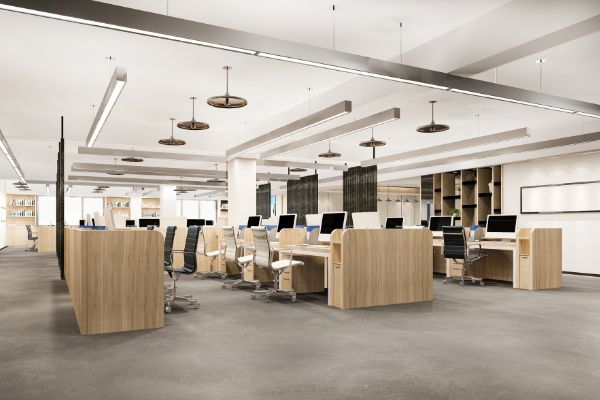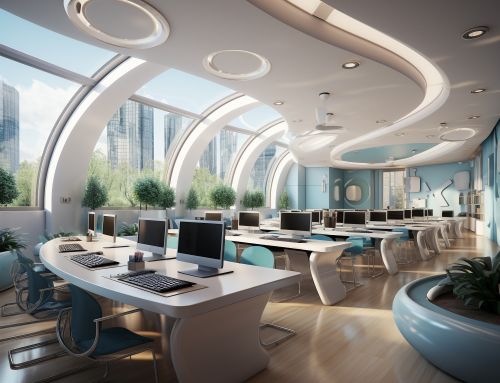You’ve seen it all, from cubicles to open offices. But hold onto your swivel chair, because there’s a new trend in town: team space. It’s shaking up workplace dynamics like a coffee-fueled brainstorming session.
Dive in with us as we dissect this growing phenomenon and how it’s redefining collaboration and productivity in modern organizations. You’ll uncover its benefits, challenges, and future perspectives.
So grab that cup of Joe; let’s explore the era of team space together.
Image by dit26978 on Freepik
Understanding the concept of team space
Let’s delve into understanding the concept of team space and how it’s revolutionizing workplace dynamics. As you navigate today’s evolving business landscape, you’ll find team spaces becoming an integral part of forward-thinking companies. They’re interactive areas designed to foster collaboration, creativity, and innovation among employees.
Team spaces aren’t just random allocations; they’re thoughtfully designed environments that facilitate better communication and engagement. Studies have shown that such spaces promote a sense of belonging within teams, which can boost morale and productivity levels. You see, traditional cubicles or isolated offices don’t encourage interaction as much as open-plan layouts do.
Research by Gensler indicates that companies with effective team spaces are more likely to be innovative. It’s crucial to understand here that effectiveness isn’t gauged merely by aesthetics but also by functionality; easy access to tools, ergonomic furniture for comfort, and flexible setup for various activities all contribute to this.
The Evolution of Workplace Dynamics
We’ve seen significant changes in how businesses operate, particularly in the area of team interactions and collaborations. Now, it’s all about embracing a ‘team space’ approach. What does this mean for you?
The concept of team space has evolved over the years, reflecting shifts in workplace dynamics. You might remember when physical presence was paramount; employees gathered around conference tables or huddled in cubicles to discuss projects. But things are different now.
With advances in digital technologies, teams can collaborate from anywhere at any time. The physical boundaries have blurred, making way for virtual spaces where ideas are generated and shared seamlessly. Your office is no longer confined within four walls; it’s as vast as the internet itself.
Changes haven’t stopped there; even team composition has become more fluid. Today’s workforce values diversity and flexibility more than ever before; fixed roles have given way to dynamic ones based on skills rather than hierarchy.
The role of team space in modern organizations
You’re probably wondering how the concept of a team space impacts modern organizations, aren’t you? Well, it’s not just about providing a physical area for collaboration. It’s more about fostering an atmosphere that encourages teamwork and innovation.
Research shows that having a well-designed team space can significantly enhance productivity. The Harvard Business Review reported that employees who are part of a well-structured team environment are more engaged and perform better than those working in traditional office setups.
Team spaces also promote transparency and open communication, which are key elements in today’s agile business world. They facilitate the exchange of ideas and allow for real-time problem-solving, making organizations more responsive to changes.
Moreover, these spaces cater to the increasing preference for flexibility in the workplace. Modern workers don’t want to be confined to cubicles; they desire environments that stimulate creativity and social interaction.
Yet there’s no one-size-fits-all solution here. Each organization should tailor its team space according to its unique needs and culture. So remember: creating an effective team space isn’t just about changing your floor plan; it’s about changing your mindset too.
Benefits of Implementing Team Space
It’s undeniable that implementing such a concept within your company can yield significant benefits, both on an individual and organizational level. After all, the team space approach isn’t simply about changing physical spaces; it’s a reimagining of how work gets done.
First, team space enhances collaboration. It breaks down silos and encourages cross-departmental interaction. Everyone’s ideas are valued in this environment, potentially leading to more innovative solutions. Research from the Harvard Business Review supports this, highlighting that companies that embrace collaborative work environments see a rise in overall productivity.
Secondly, the design of team spaces impacts employee satisfaction. They provide flexibility; employees aren’t chained to one desk or cubicle but can choose where they want to perform their tasks depending on their mood or the nature of the task at hand.
Lastly, by fostering open communication and transparency, team space reduces unnecessary bureaucracy and speeds up decision-making processes. You’ll notice reduced email chains and fewer drawn-out meetings as information flows more freely across all levels.
Challenges in Transitioning to a Team Space Environment
Despite all the advantages, there are potential hurdles when transitioning to this type of environment. The shift from private to shared spaces can initially be jarring for employees used to working in isolation. You may find resistance stemming from concerns about privacy and noise levels.
Research shows that while open spaces foster collaboration, they can also lead to distractions, reducing productivity levels. In a study conducted by the University of Sydney, lack of sound privacy was found to be the biggest drawback of open-plan offices.
Adapting to new technology is another challenge you might encounter. Team-space environments often necessitate digital tools for communication and project management. Employees lacking tech savvy might feel overwhelmed or disoriented.
Then there’s the issue of managing remote workers effectively within a team space setup. Ensuring equitable participation and maintaining clear communication with team members spread across different locations can be tricky.
Lastly, remember that not every task is suited for collaborative workspaces. Some tasks require deep concentration and minimal interruptions—something hard to achieve in a bustling environment.
Navigating these challenges requires patience, strategic planning, and strong leadership skills on your part as an organization’s decision-maker.
Future Perspectives on Team Space in Workplace Dynamics
Moving forward, you’ll need to consider how these shared environments will continue to evolve and shape the future of work efficiency. As technology advances and remote working becomes more prevalent, team spaces will likely adapt to accommodate these changes.
Research indicates that virtual team spaces are an emerging trend, allowing for collaboration regardless of physical location. This means you’ll have to be proactive in incorporating digital tools into your workflow, ensuring seamless communication across different locations.
Similarly, flexible working arrangements may influence the structure of team spaces. You might see a shift from fixed desk arrangements towards more versatile setups that can adjust according to project needs or team sizes.
Equally important is understanding how these transformations could impact team dynamics and productivity levels. Studies suggest that well-designed collaborative spaces can boost creativity and problem-solving skills among employees. But it’s not just about physical layouts; creating an inclusive culture where everyone feels valued is crucial too.
Conclusion
In your quest to drive organizational growth, don’t underestimate the power of team space. It’s reshaped workplace dynamics, offering numerous benefits yet presenting unique challenges.
However, as you navigate this transition, remember: it’s not just about changing the physical layout—it’s about fostering collaboration and innovation.
So embrace team space; let it transform your organization today and redefine its future tomorrow.






Leave A Comment